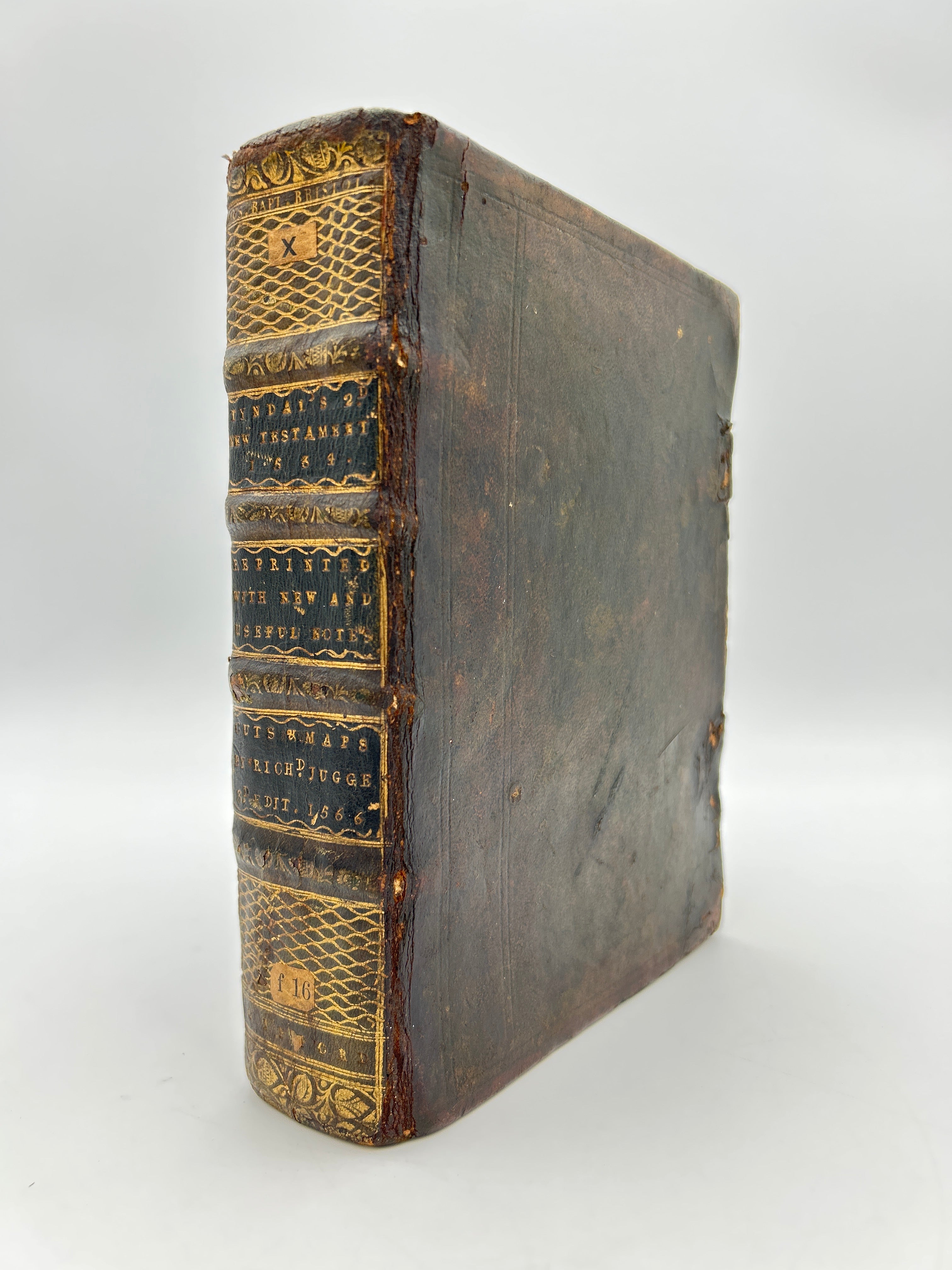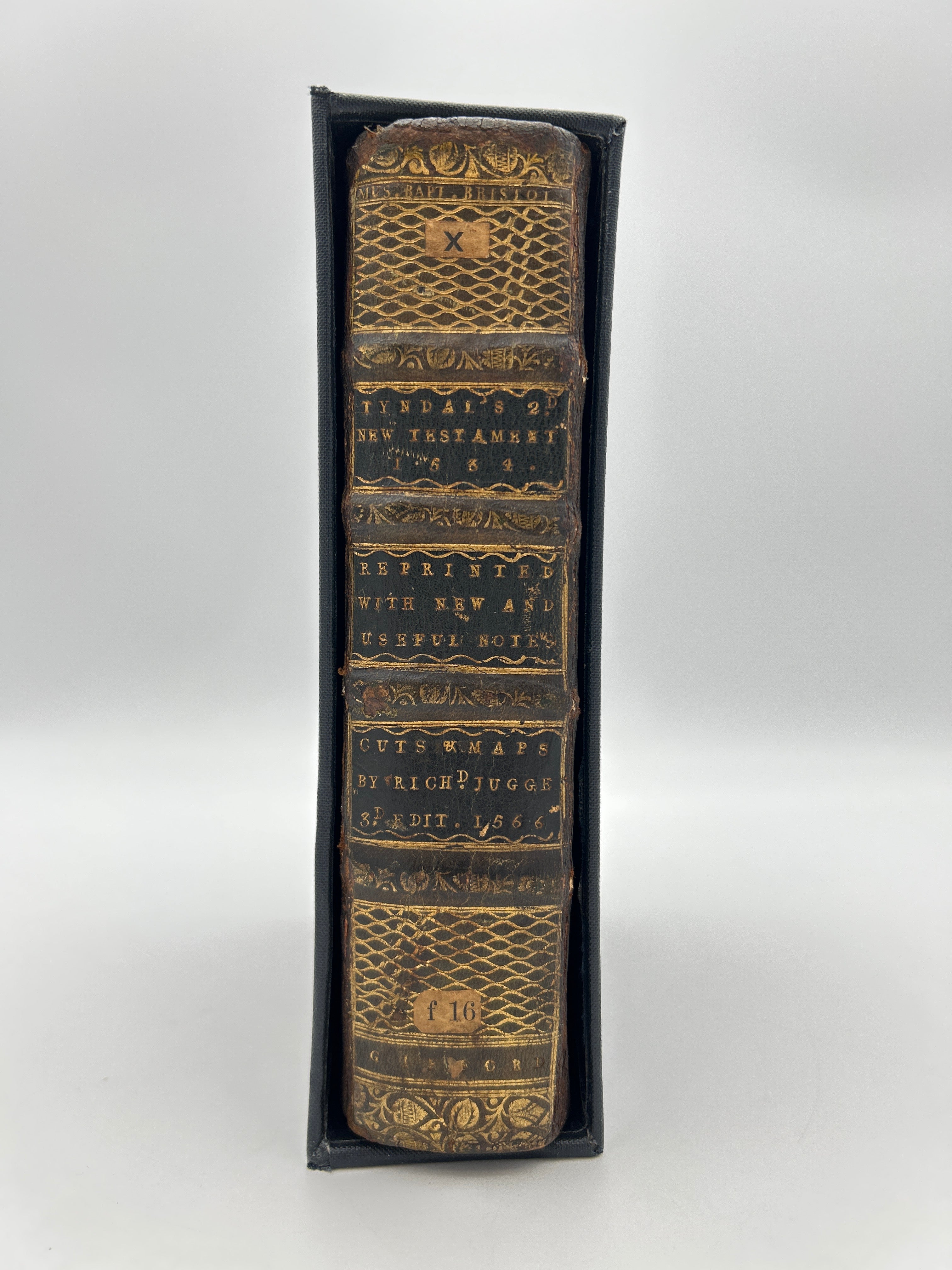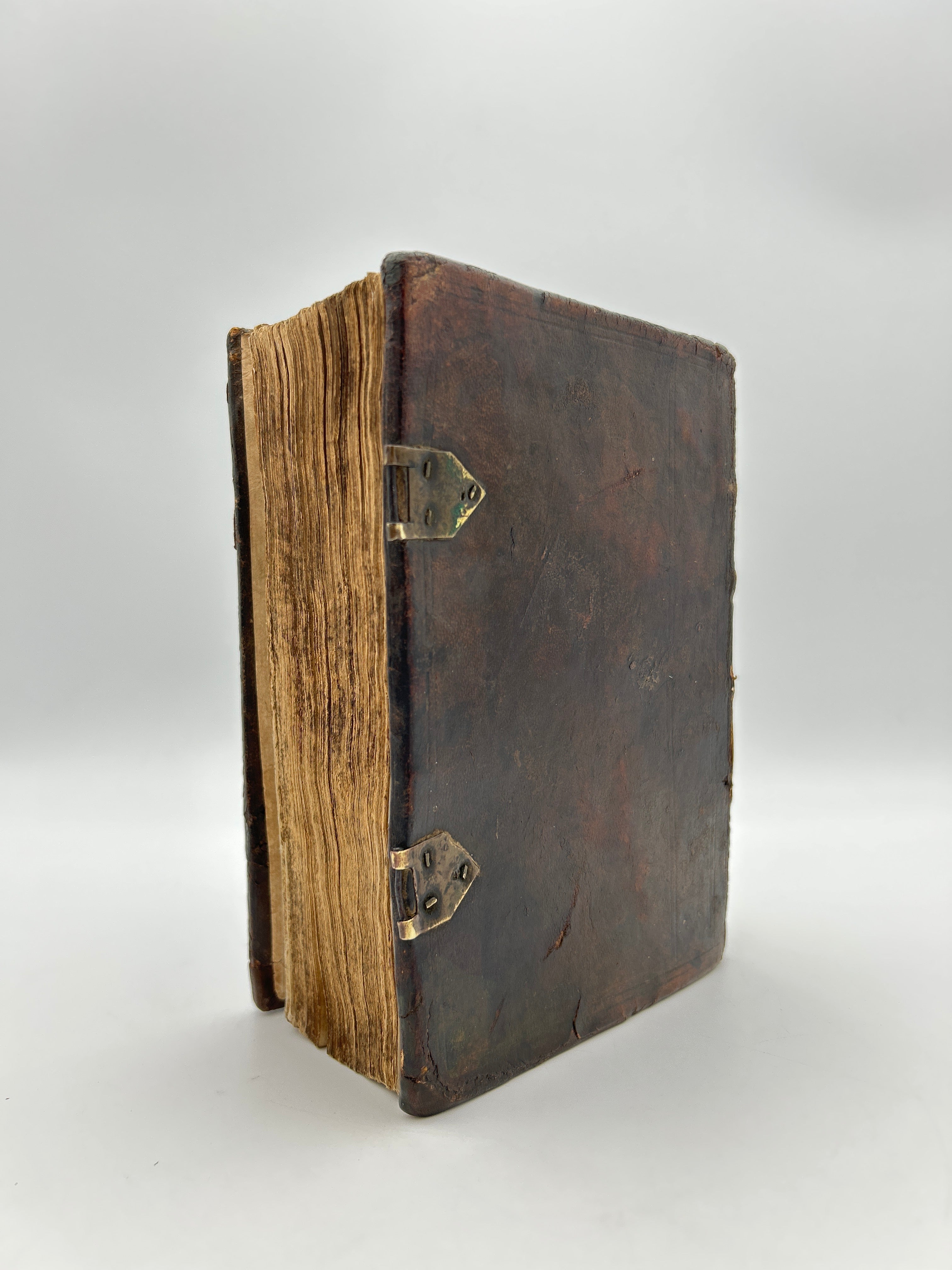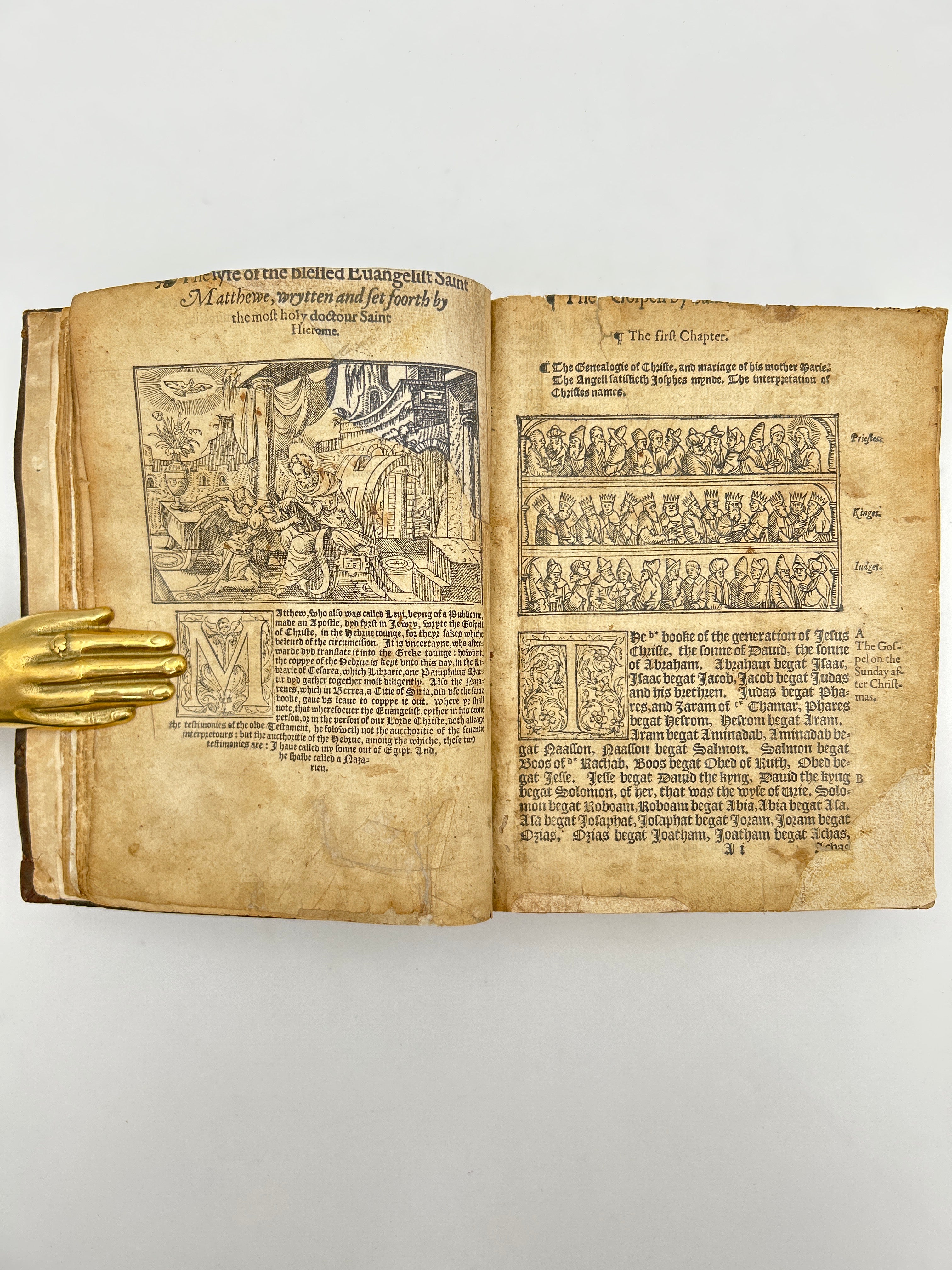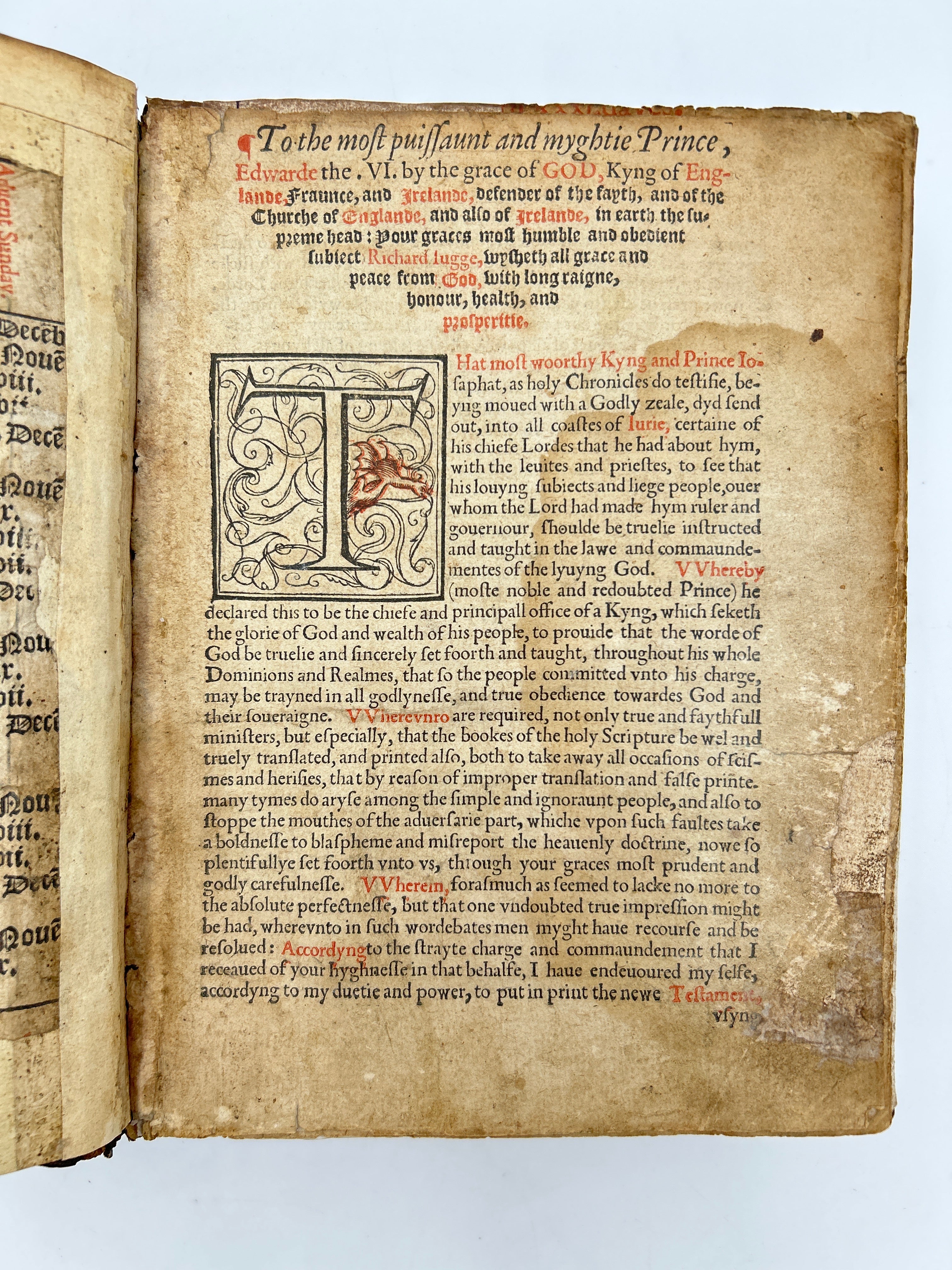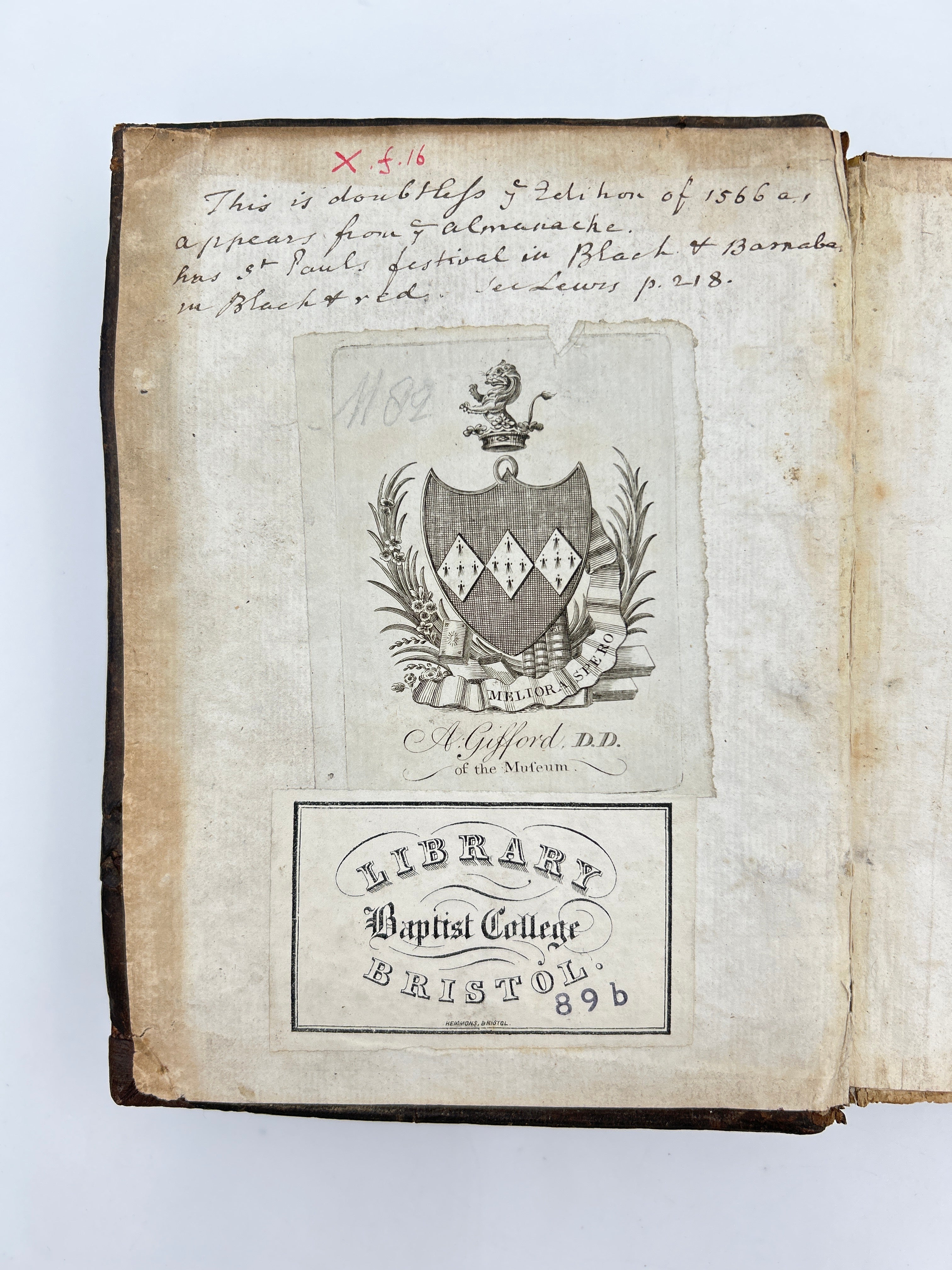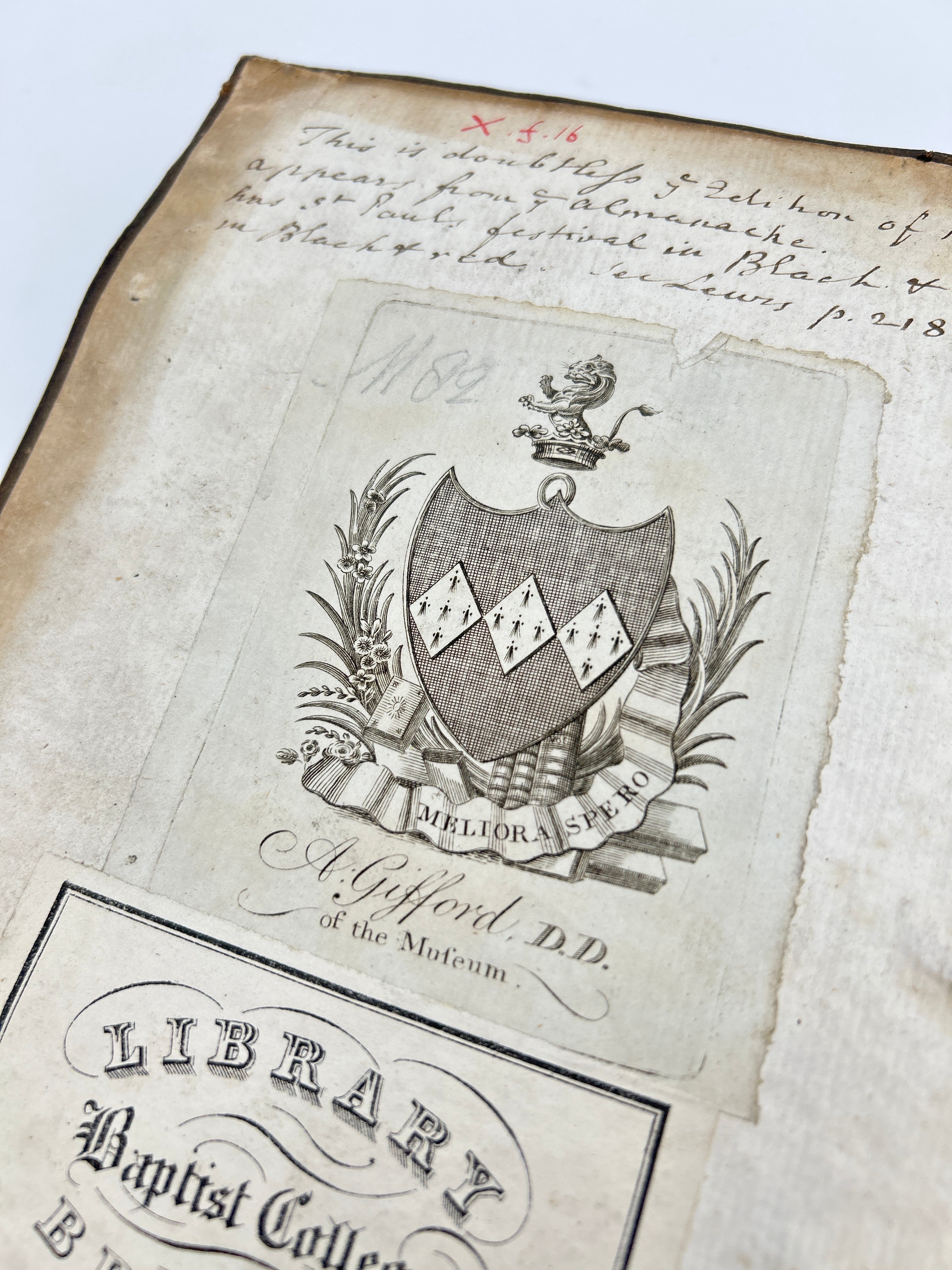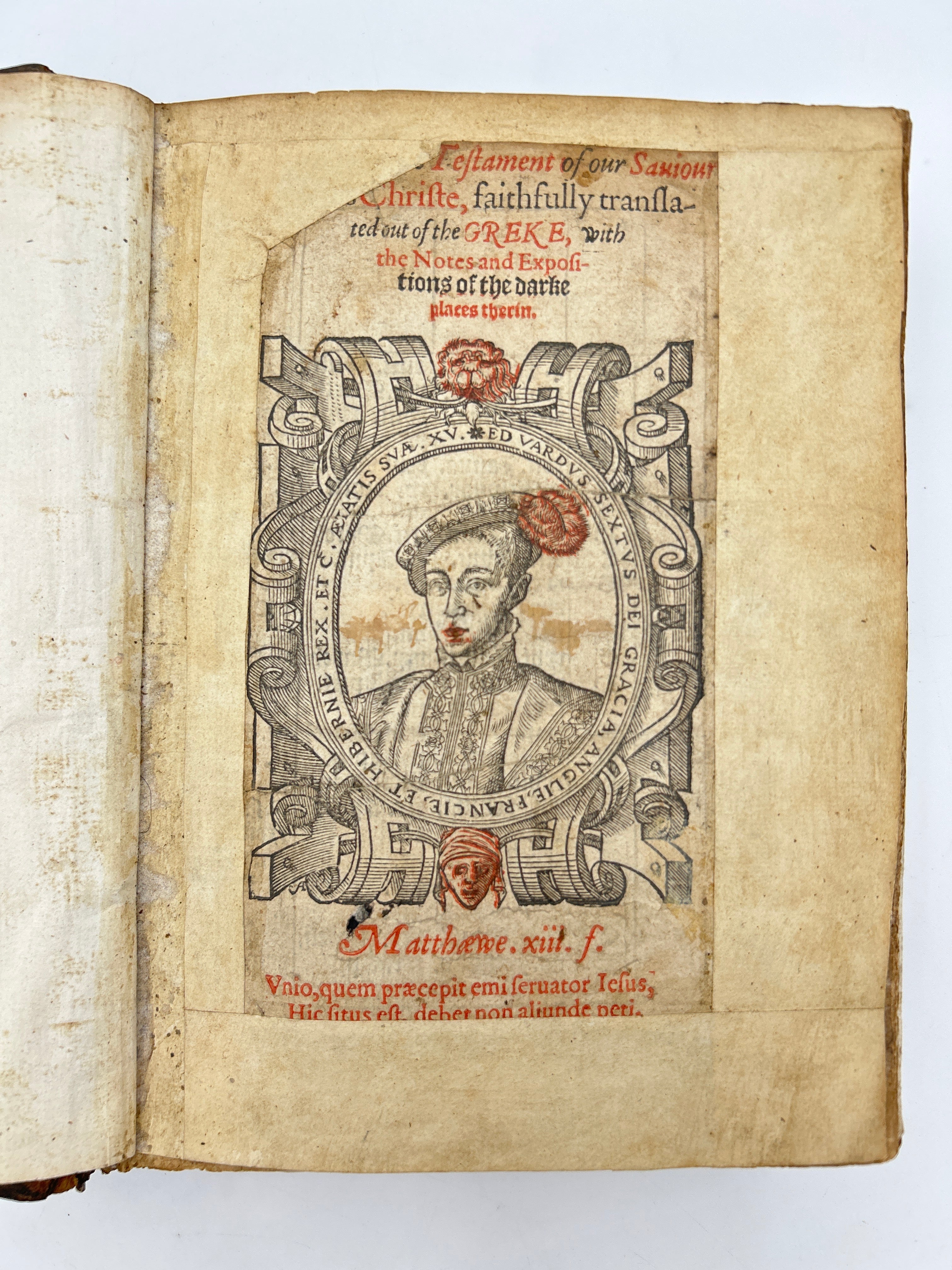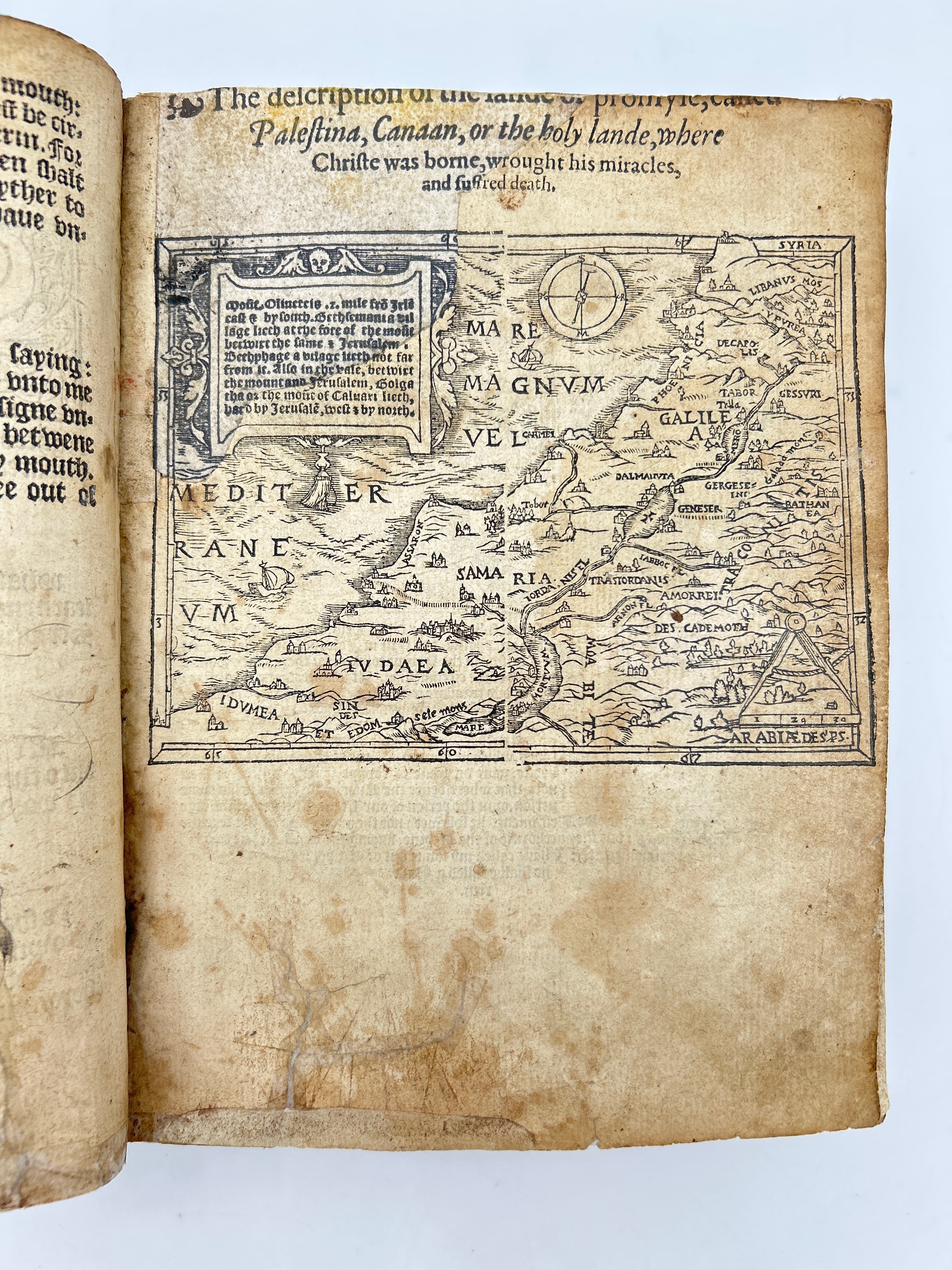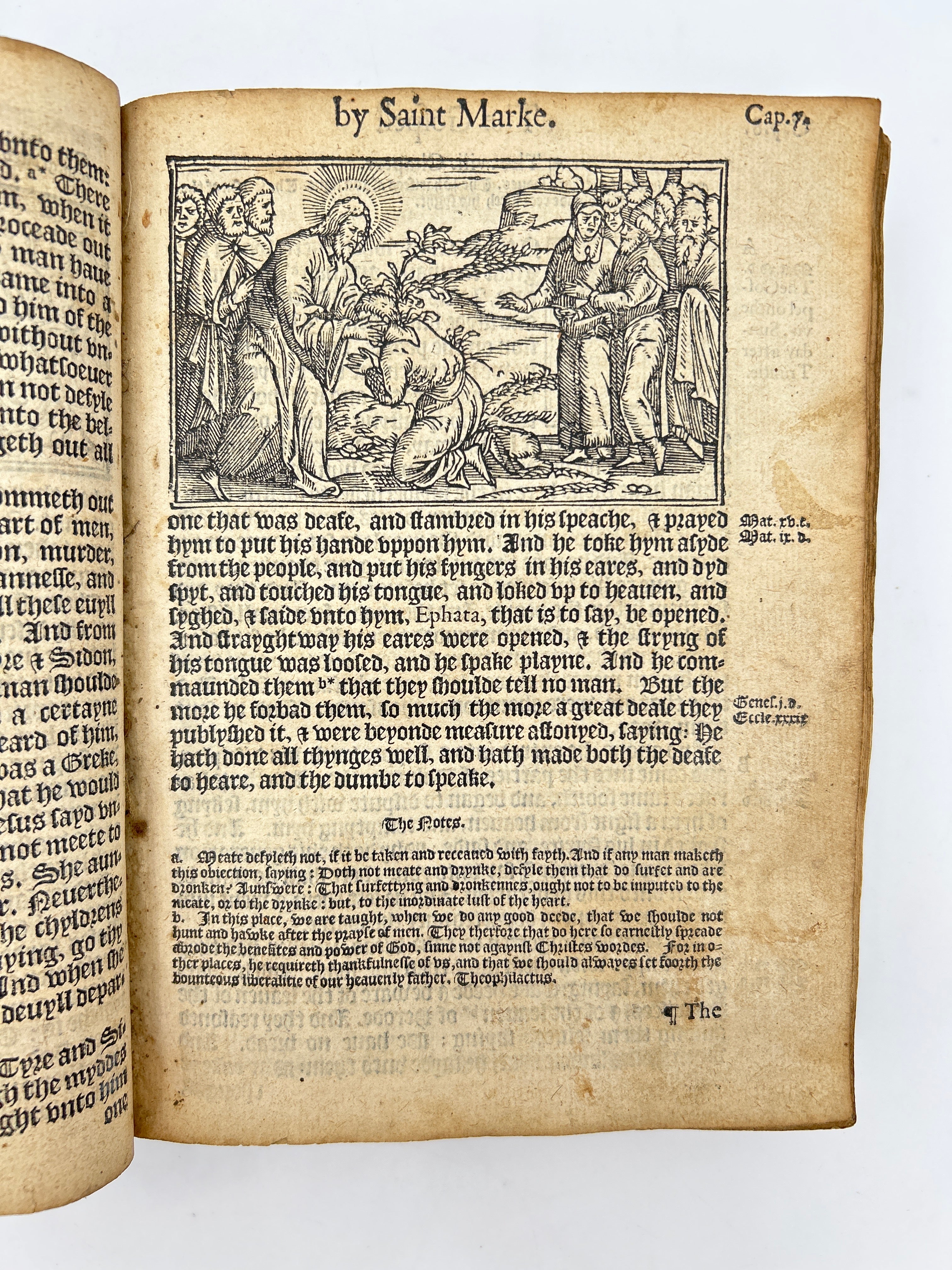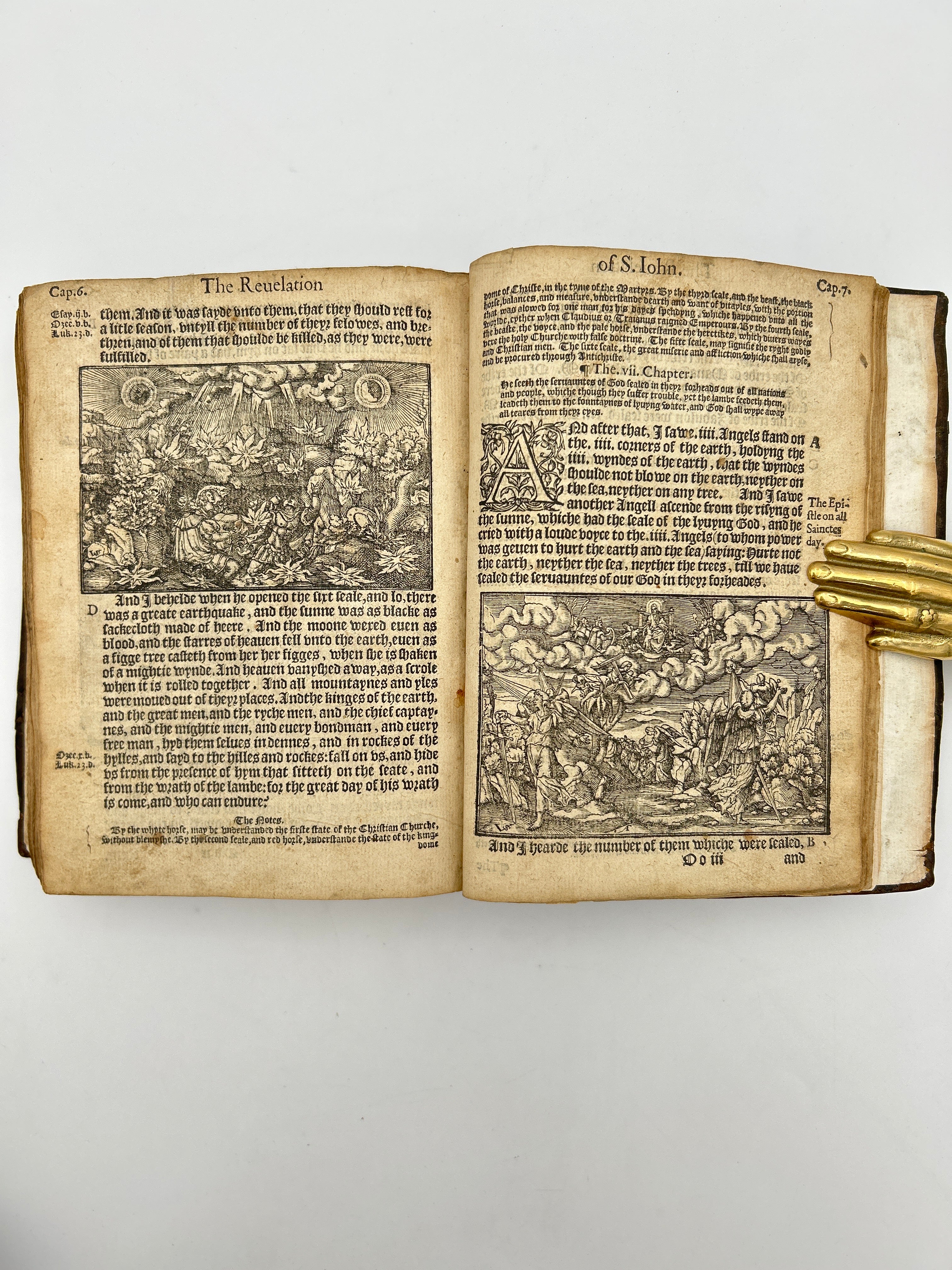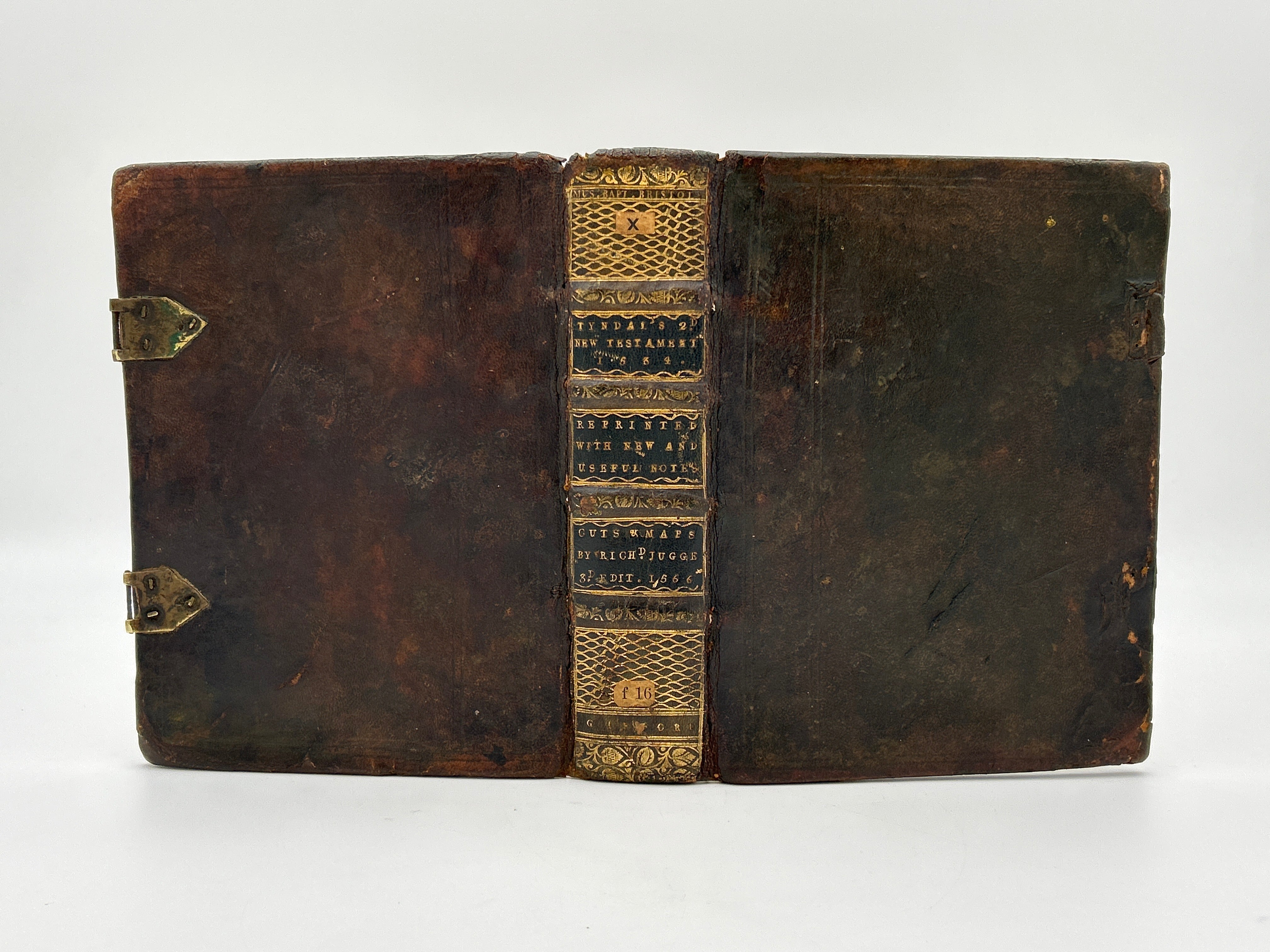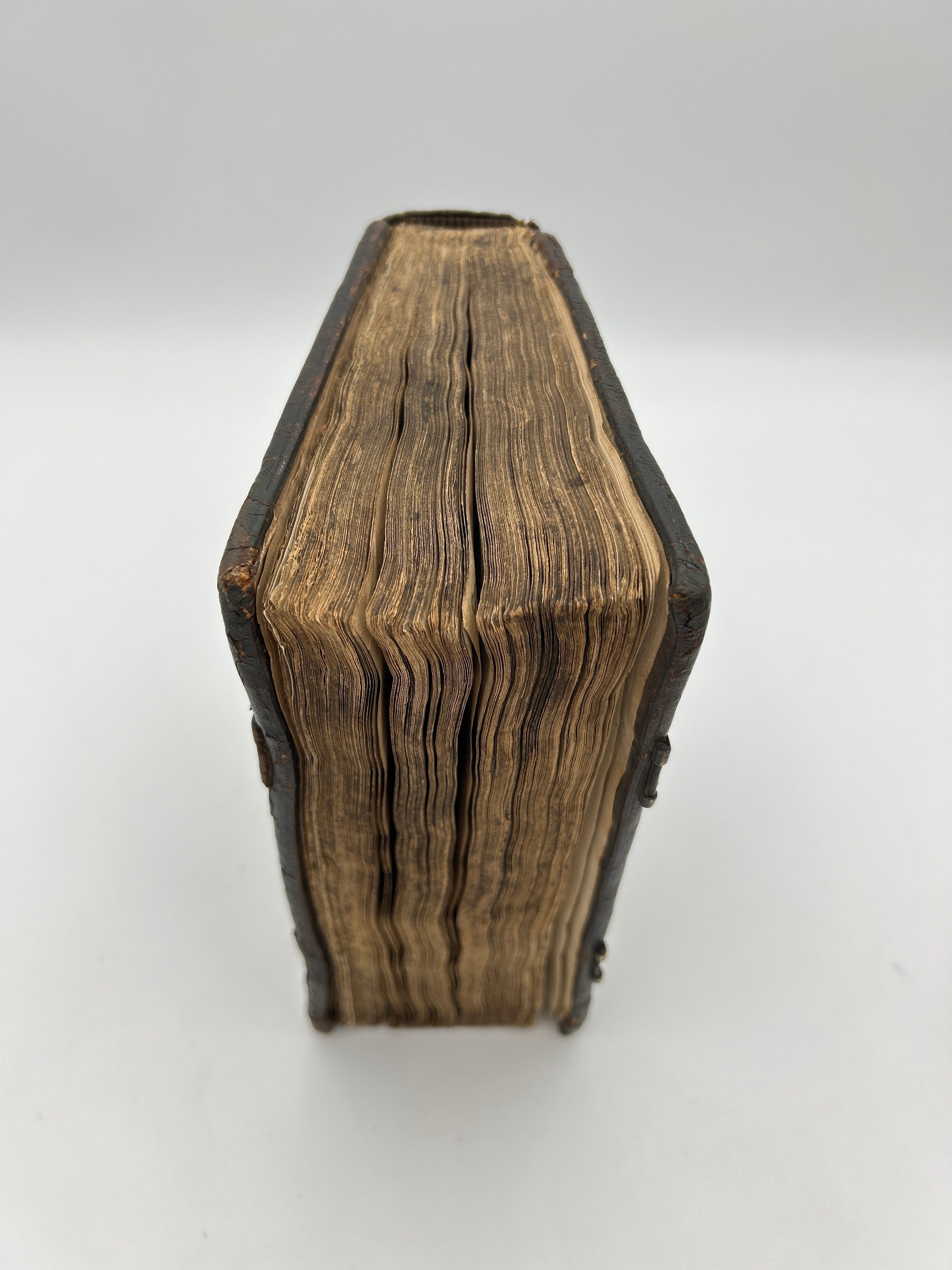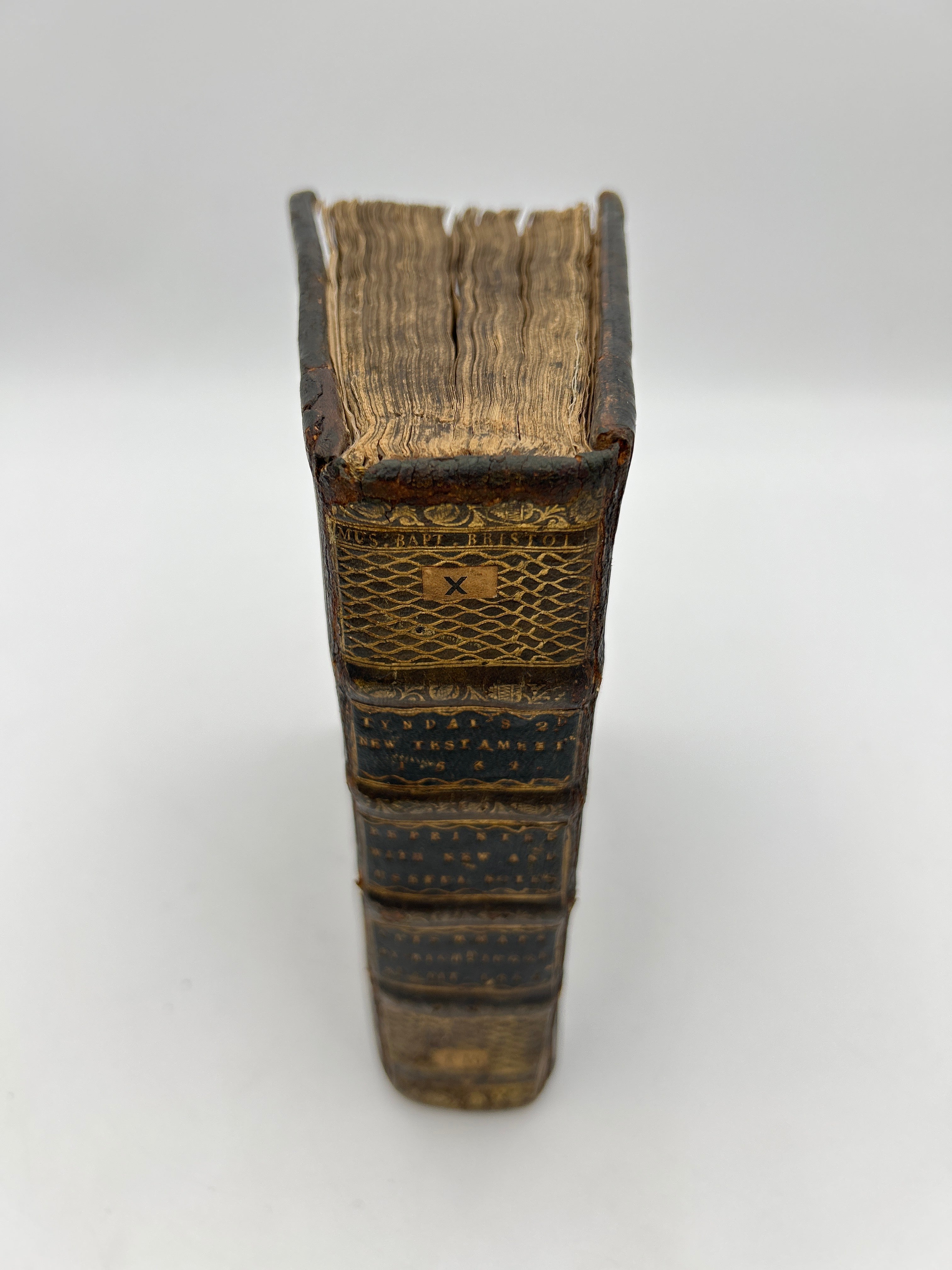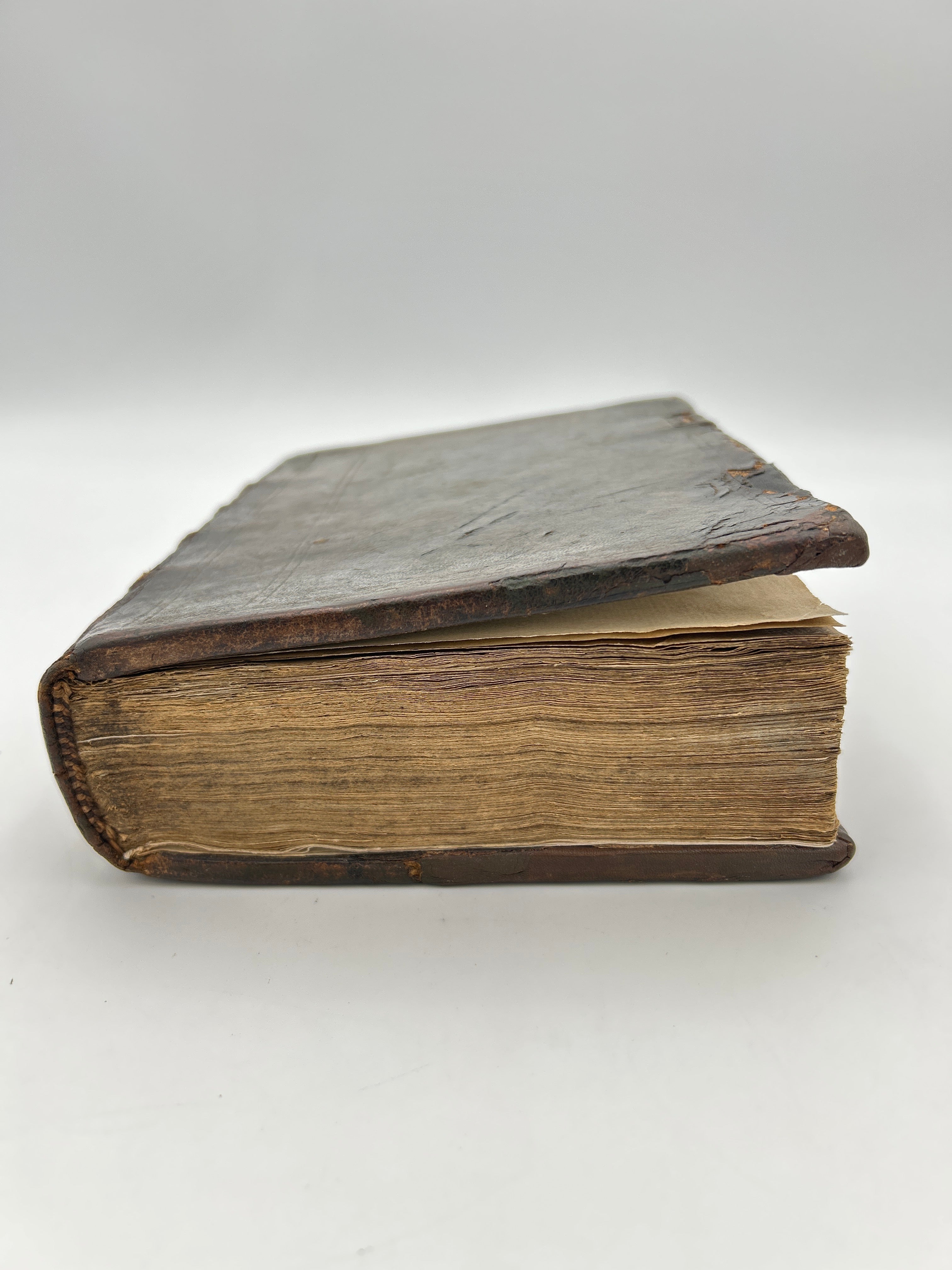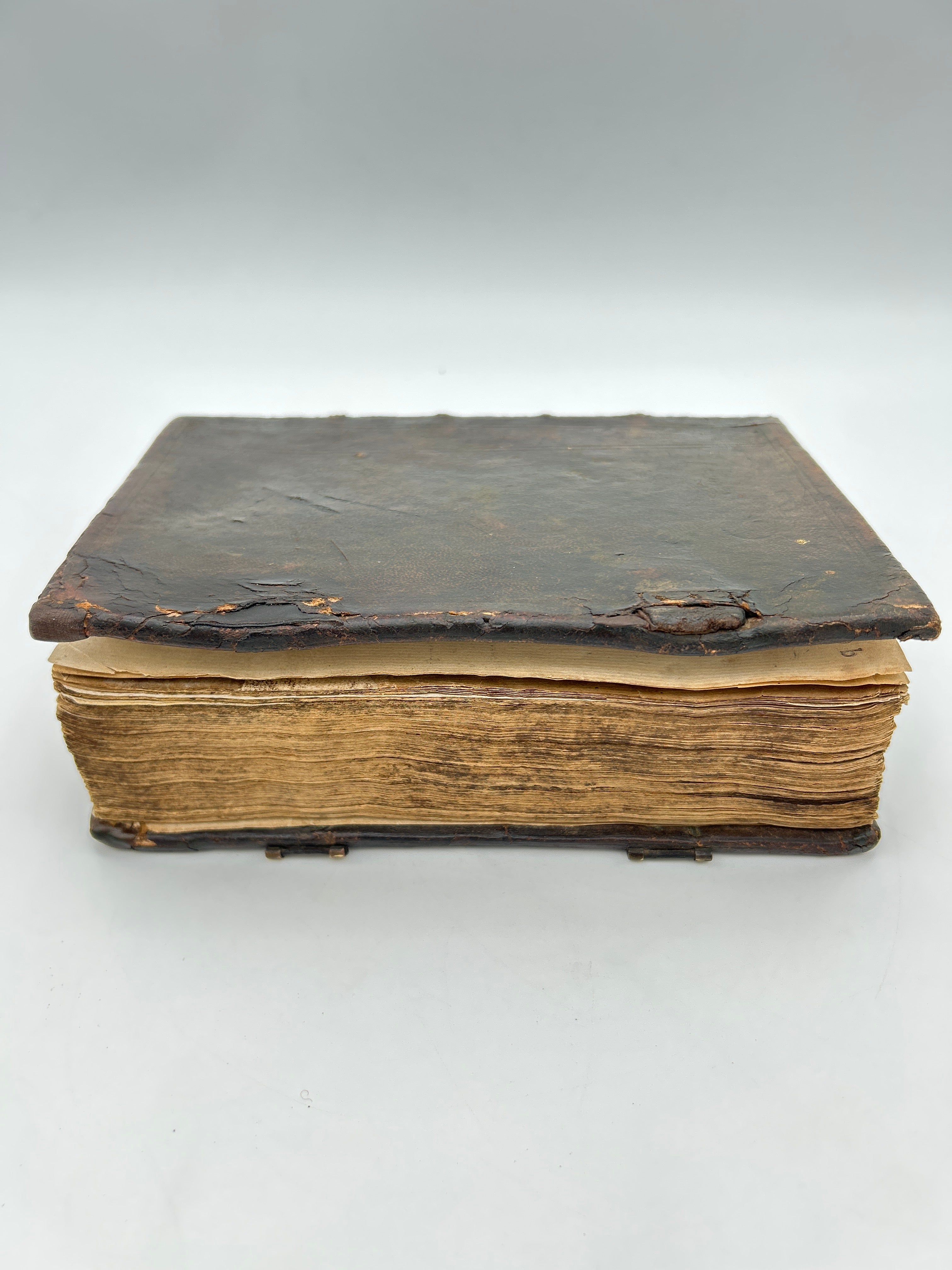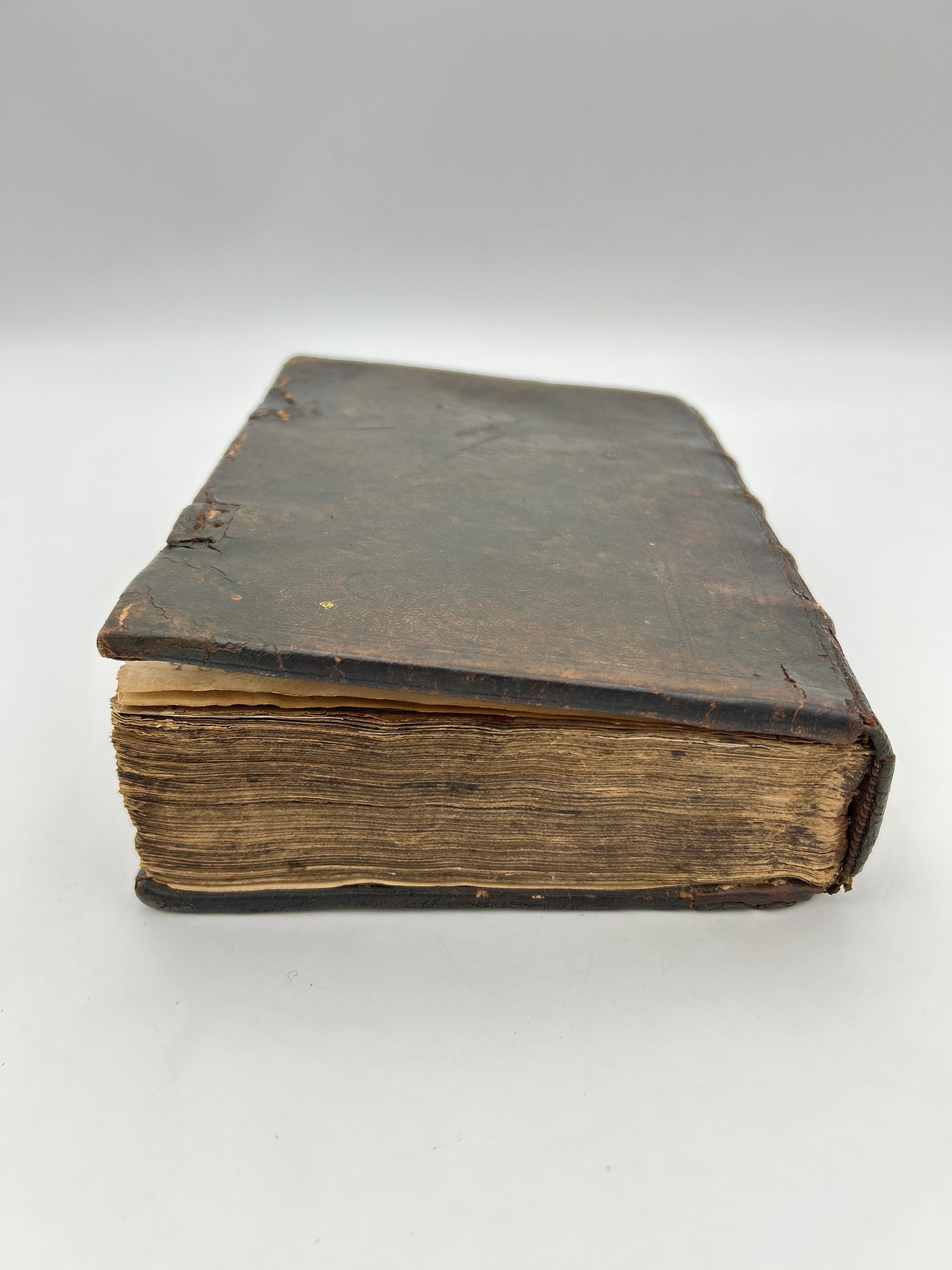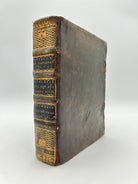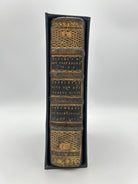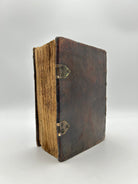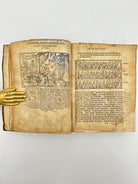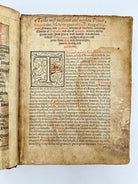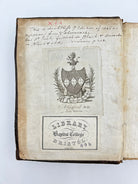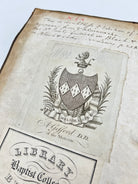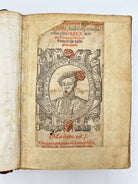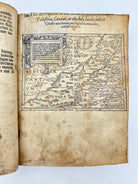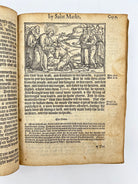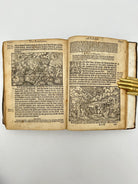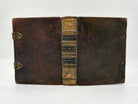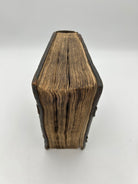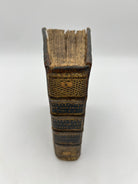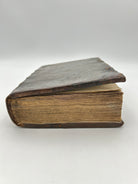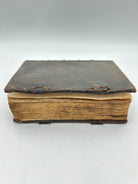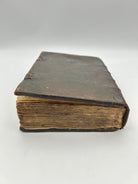Tyndale bible
Couldn't load pickup availability
5RR Holy Bible. The Newe Testament of Our Savior Jesu Christie faithfully translated out of the Greek, with the Notes and Expositions of the darke places therin. London: Richard Jugge, 1566.
Notes
William Tyndale- probably the best-known story about him relates to the beginning of his career when, in 1521, as the chaplain to Sir John Walsh he was involved in a heated exchange with a fellow priest about whether the Bible should be translated into the vernacular. In response to the argument that the faithful need rely only the law of the Pope rather than the word of God, Tyndale replied: “I defy the Pope and all his laws; and…I will cause the boy that driveth the plough to know more of the Scriptures than thou dost”. Two years later, Tyndale began work on his translation of the New Testament. As the law forbade the publication of an English translation, he fled to Germany where he completed his work. In Cologne (a Catholic city) he managed to print his translation of St Matthew’s Gospel, but fearing that the authorities had discovered his plan, he left for Worms where, in 1526, the great Reformation printer Peter Schoefferpublished Tyndale’s complete New Testament in English. Antwerp merchants smuggled copies into England where those that were not seized and burned were sold secretly through a clandestine network of booksellers known as “New Testamenters”. Tyndale remained in exile until he was arrested in Antwerp and imprisoned before, in 1536, being strangled and his body burned. But by then, his New Testament had provided fuel for the Reformation and transformed the English language.
With ownership inscriptions: “Margaret Cappan born the yeare of our lord god 1614” and “Robert Cappan” and “Mynster Cappan his Booke1646”. Front pastedown has an armorial bookplate of “A. Gifford D.D. of the Museum”. This is Andrew Gifford (1700-1784) who was a Baptist Minister, an Assistant Librarian at the British Museum and its first numismatist. The inscription above his bookplate which states that “This is doubtless ye edition of 1566 as appears from ye almanacke” is likely by Gifford. Bookplate of the Bristol Baptist College Library. The college was founded in 1720 and Gifford (who was from a family of Baptist Ministers in Bristol) left his library to it. The college was also home to one of only two surviving copies of the first complete edition of Tyndale’s New Testament, printed in 1526. That copy is now in the British Library. Herbert, 121.
Description
The third of Jugge’s quarto editions of William Tyndale’s translation of the New Testament. 4to in 8s. 203x150mm. Unpaginated. Collates [leaf icon] 8, C10, A8-Y8, Aa8-Pp8, Qq1-2 with Qq3-4 supplied in a good and sympathetic facsimile. Bound in late sixteenth- or early seventeenth-century blind ruled calf. Spine with (later) gilt reticulated design in first and fifth compartments (on which two small shelf labels have been stuck) and with three black morocco labels lettered in gilt. Remains of clasps on edges of boards. Corners and joints repaired and strengthened. Some scuffing and wear to boards. Title page (in red and black) with woodcut portrait of Edward VI and, on the verso, Almanacke for the years 1566 to 1590. The title page has been cut down (with, ironically, the loss of the translation of the epigraph) and re-margined on all sides. Also the top left corner has been cut off with some loss of text. Several other leaves have been repaired with blank paper to the outer edges and corners with the occasional loss of text. Some marking and soiling throughout and a little staining in places while the verso of Y8 and recto of Aa1 have a large black ink-stain across them. Top edges of early gatherings (up to St Mark’s Gospel) have been cropped with slight loss of text in places. The celebrated woodcuts are particularly nice and overall this is a very good copy of the last of the series of forty editions of Tyndale’s New Testament.
